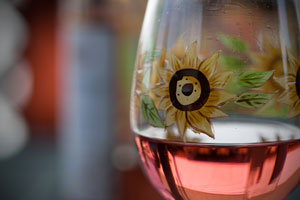On a lark, I’ve been know to select a wine by the welcoming contour of the bottle in my hand.
Or when a fantastic label design meets my eye.
Sometimes I like what I get.
Sometimes not.
But the point is, after tasting, I know what I like.
Or so I think.
When the wine stars align in a particular way and I decide to splurge on the product of some otherwise fiscally forbidding region of France or Italy, does the price help make up my mind about its likeableness a bit?
Am I sometimes duped by a particular vineyard’s celebrity status into discerning a deliciousness I could have more affordably found in Two-Buck Chuck?
Several recent articles (including at The New York Times and Newsweek) explore the labyrinthine psychology of wine appreciation.
They come in the wake of a new book, The Wine Trials, that boasts of uncovering “100 wines under $15 that outscored $50-$150 wines in brown-bag blind tastings.”
Those results are based on tastings of more than 6,000 glasses of wine by 500 wine experts and everyday wine drinkers, according to the book publisher. Press kit examples:
- Two-thirds of tasters preferred a $12 Domaine Ste. Michelle Brut, a Washington State sparkling wine, to a $150 Dom Pérignon Champagne; a six-dollar Vinho Verde from Portugal beat out a $40 California Chardonnay and a $50 1er Cru white Burgundy.
Other picks from the book:
- Aveleda Vinho Verde, Portugal, $6
- La Vieille Ferme Rouge, Perrin & Fils, France, $8
- Oyster Bay Sauvignon Blanc, New Zealand, $13
These findings shouldn’t come as much of a surprise to alert readers of Wine News Review, home of the aptly named fairly frugal affordability index.
As I say in the About page concerning the guiding principle of this blog: “Even some of the world’s top experts acknowledge, wine doesn’t have to be pricey to be good.”
Scientists, too, have chimed in.
A California Institute of Technology study earlier this year — plumbing the exotic field of neuroeconomics, the subconscious appeal of expensive stuff — found that people report a greater enjoyment of wine if they think it costs more.
Turns out, that’s no big surprise either, in wine circles, at least, according to this Times Online article:
Rupert Wollheim, a master of wine who runs ripegrapes.co.uk, an online wine retailer, said that the response described by [the study] was well known in the wine business.
He said: ‘Price is just one of the elements, but if you served the same wine in better glasses or a grander environment, that would also make people think the very same wine was better.’
USA TODAY‘s Jerry Shriver decided to put the tester to the test. He tried 10 wines blind. And then he tried the same wines with the labels visible.
Interestingly, he discovered that his top three favorite wines were the same from both tastings (including this affordable pick: 2007 Georges Duboeuf Clos des Quatre Vents, Fleurie, Beaujolais, France, about $12).
Which reminds me of an observation in one of my previous postings: Just as Duke Ellington opined about the quality of music (“If it sounds good, it is good”), the same could also be said about wine.
If it tastes good, it is good.
Even if it’s inexpensive!
Want to find a perfectly priced bottle of wine? Give the Smarter Wine Search a try.
